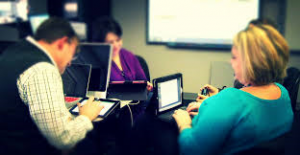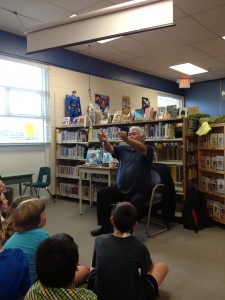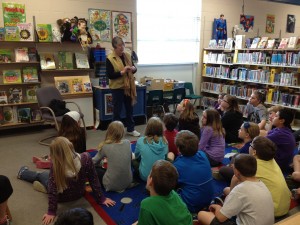 While considering libraries in developing countries, I immediately thought of the weeding process that I am undergoing right now. When we have completed the weeding, the books will be donated to The Compassionate Warehouse, which is a Victoria based company (http://www.crwarehouse.ca/). Some of the Countries that receive donations include: Haiti, Laos, Ghana, Pakistan, Thailand, and Libya.
While considering libraries in developing countries, I immediately thought of the weeding process that I am undergoing right now. When we have completed the weeding, the books will be donated to The Compassionate Warehouse, which is a Victoria based company (http://www.crwarehouse.ca/). Some of the Countries that receive donations include: Haiti, Laos, Ghana, Pakistan, Thailand, and Libya.
The CRW is dedicated to helping others by sharing our cast-off abundance and wealth with those not similarly blessed. Our society has a superabundance of stuff that continues to have a useful lifespan. We gather these surplus items from our region and add them to new items crafted and donated by volunteers across Canada. All these goods, which may include quality medical equipment and supplies, clothing, linens, educational materials, tools, sewing machines, toys and bicycles, are carefully loaded into 40-foot containers and shipped. All items shipped are clean, appropriate and in good repair.
When I consider the books that are being shipped to these countries from my own library, I realize that many of these schools have their few books under lock and key and they are ultimately precious to schools. However, I do consider if these are the best resources for the students. Some of the materials are in good condition, but are out of date and would not be relevant for a student in my school. So these thoughts leave me unsure about what a better solution for these schools would be. By looking online, I found that some programs are working towards getting mobile devices to schools in impoverished areas. CODEcan (http://www.codecan.org/) supports literacy around the world by distributing books published in the local language. Some of the challenges they discussed include:
-Internet access can be very slow and minimal
-Phones don’t always work
-Letter mail can be very slow and unreliable
When we consider how this would affect the access of these resources it could certainly be challenging. As a school who does not have access to Wifi, I can understand how this creates challenges. However, some organizations are taking these challenges on. For example: Worldreader (http://www.worldreader.org/what-we-do/) has put over 944,300 e-books into the hands of 13,596 children in 9 African countries. Many of these books are in local languages. This organization has had major success with the use of ereaders for students and has increased their reading comprehension scores by 13%. They have also started a new program in which people in developing countries can also access books on their mobile phones:
For the first time ever, millions of folks in the developing world have access to a library of books using a device they already own: their mobile phone. With its application for feature and android phones, Worldreader is turning on its head the notion that reading e-books requires an e-reader, tablet or smart phone.
To give you an idea of the enormous scope and potential: feature phones are the largest segment of the global mobile market, with over 60% of the global mobile market share with over 5 billion mobile subscribers. In 2013 an average of 334,851 monthly active users completed 657,475 books on Worldreader Mobile. We hope to have 2 million people reading each month by the end of 2014.
This program truly is inspirational as they have found a way to support schools and libraries with information that is relevant to their culture, up to date and in good condition. By shipping used books, we cannot guarantee this and ultimately ereaders are the best way to learners. Watch the video below for more information on this amazing organization.




